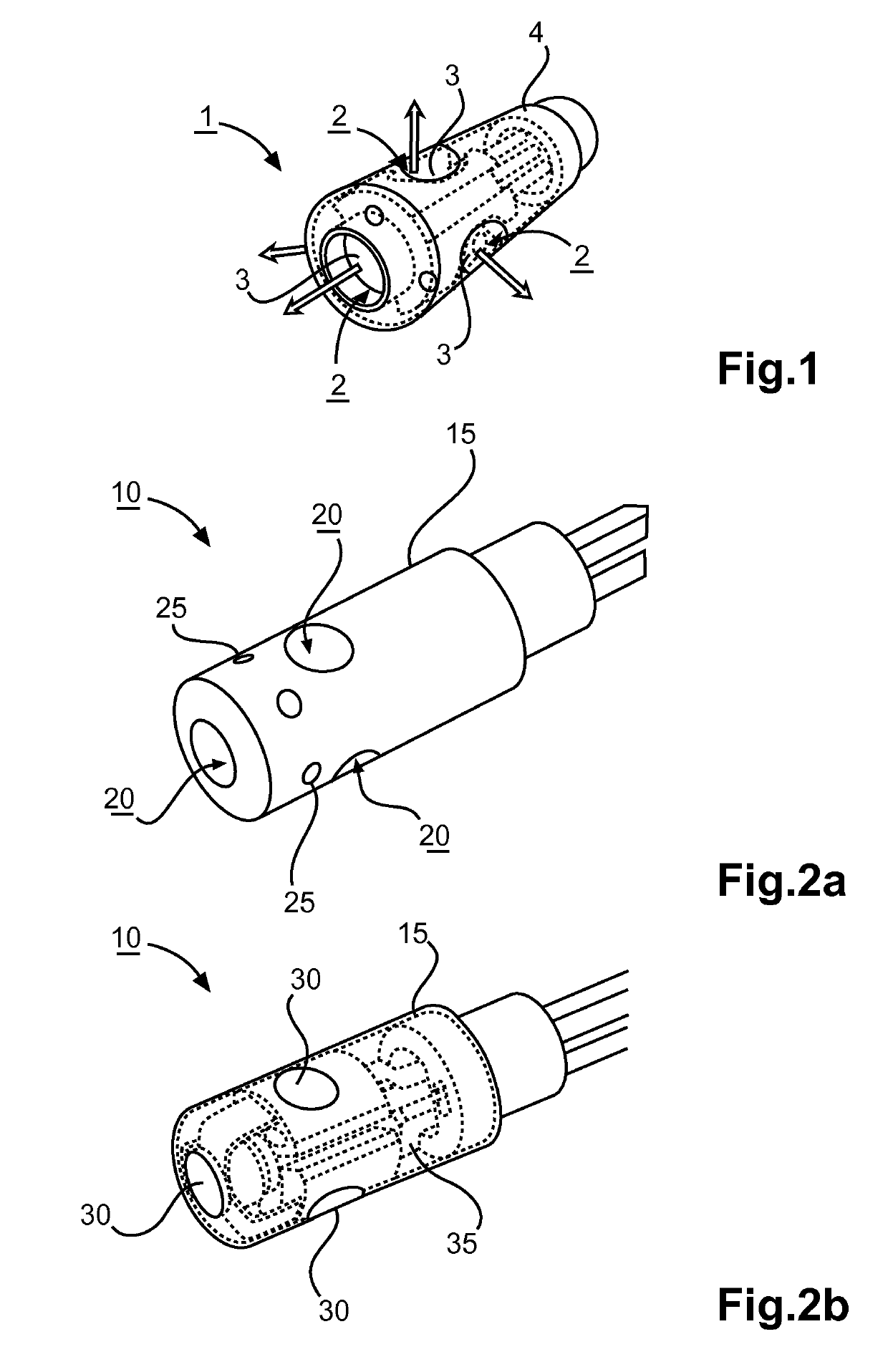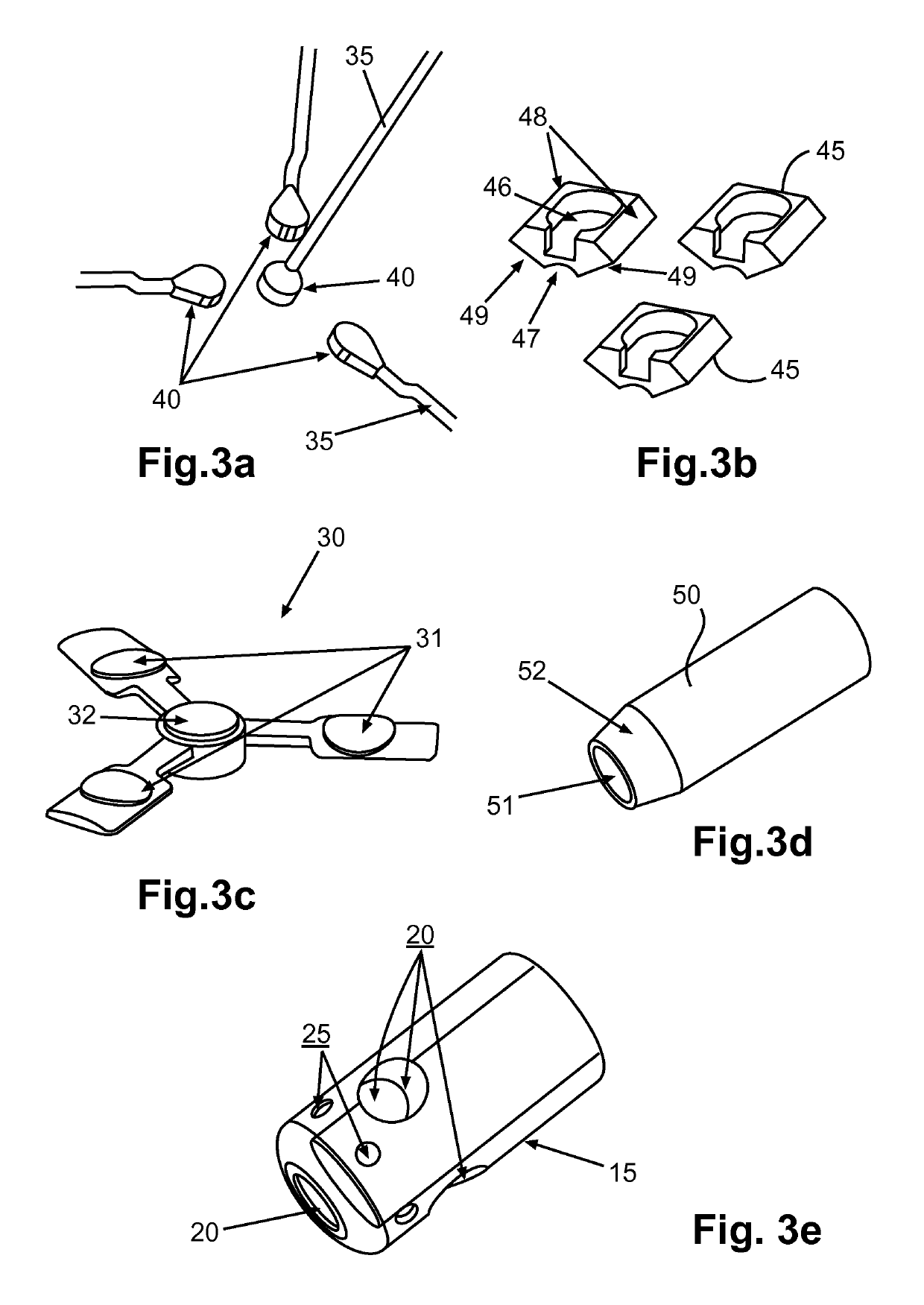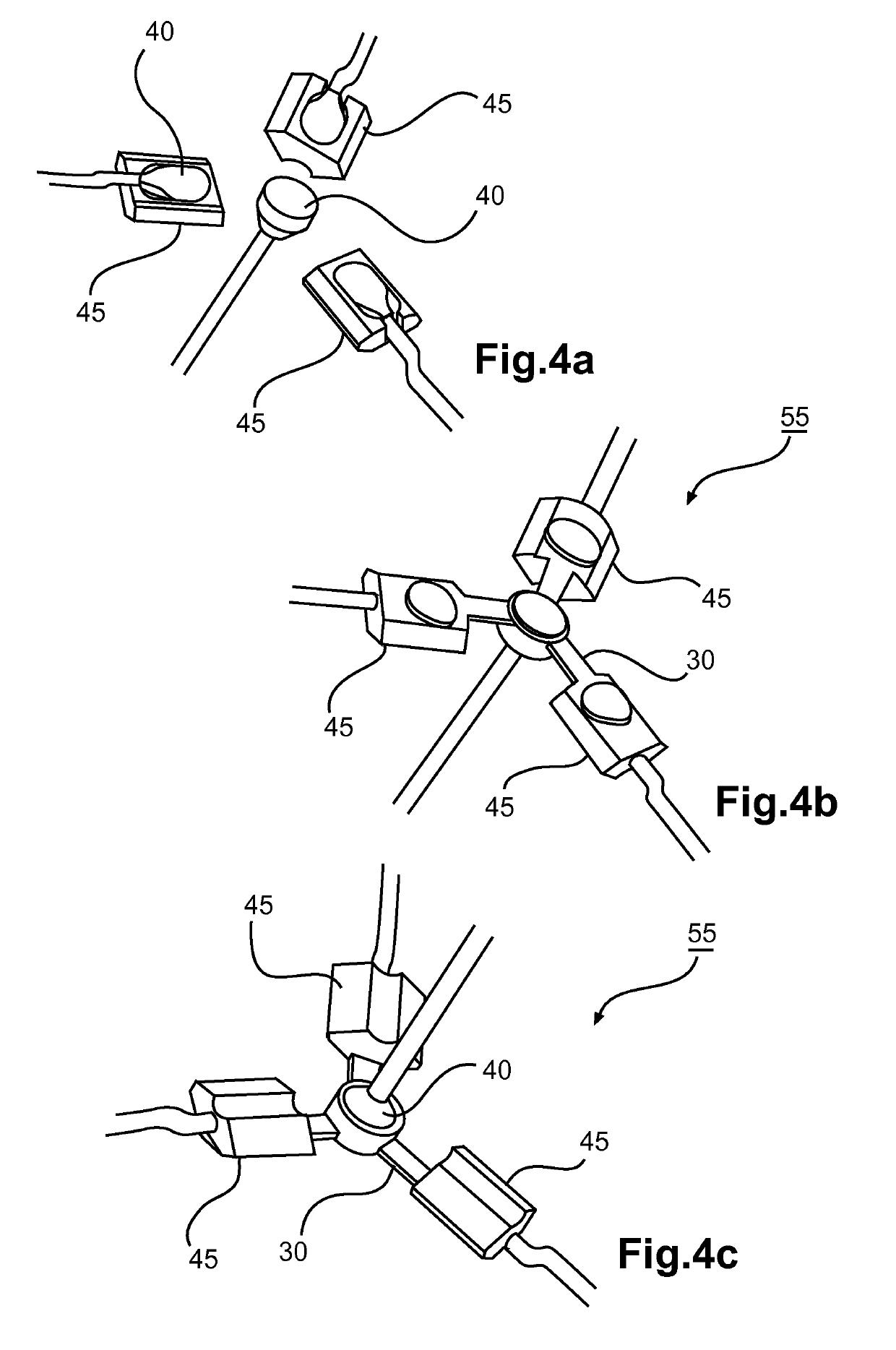Interventional device, method of assembling, and assembling system
a technology of thromboembolic events and assembling methods, applied in the field of interventional devices, methods of assembling, and assembling systems, can solve the problems of thromboembolic events with severe consequences, complications during treatment procedures, etc., and achieve the effect of reducing the risk of thromboembolic events
- Summary
- Abstract
- Description
- Claims
- Application Information
AI Technical Summary
Benefits of technology
Problems solved by technology
Method used
Image
Examples
Embodiment Construction
[0066]FIG. 1 shows an ablation catheter tip 1, which includes one front transducer 3 and three further transducers 3 directed sidewise, which are provided inside a casing 4 of the ablation catheter tip. The casing 4 comprises openings 2, through which the transducers 3 transmit and receive ultrasound signals. The transducers 3 do not extend into the openings 2 and accordingly the surface of the ablation catheter tip 1 includes recesses at the position of the openings 2.
[0067]FIG. 2a shows a first view of an ablation catheter tip as an example of an interventional device in accordance with an embodiment of the invention. The ablation catheter tip 10 includes a casing 15 having plural openings 20 and several through-holes 25. FIG. 2b shows another view of the ablation catheter tip 10 of FIG. 2a, where the casing 15 is shown as being transparent for illustrative reasons. Inside the casing 15, signal interfaces 30 of the signal assemblies of the ablation catheter tip can is shown togeth...
PUM
 Login to View More
Login to View More Abstract
Description
Claims
Application Information
 Login to View More
Login to View More - R&D
- Intellectual Property
- Life Sciences
- Materials
- Tech Scout
- Unparalleled Data Quality
- Higher Quality Content
- 60% Fewer Hallucinations
Browse by: Latest US Patents, China's latest patents, Technical Efficacy Thesaurus, Application Domain, Technology Topic, Popular Technical Reports.
© 2025 PatSnap. All rights reserved.Legal|Privacy policy|Modern Slavery Act Transparency Statement|Sitemap|About US| Contact US: help@patsnap.com



